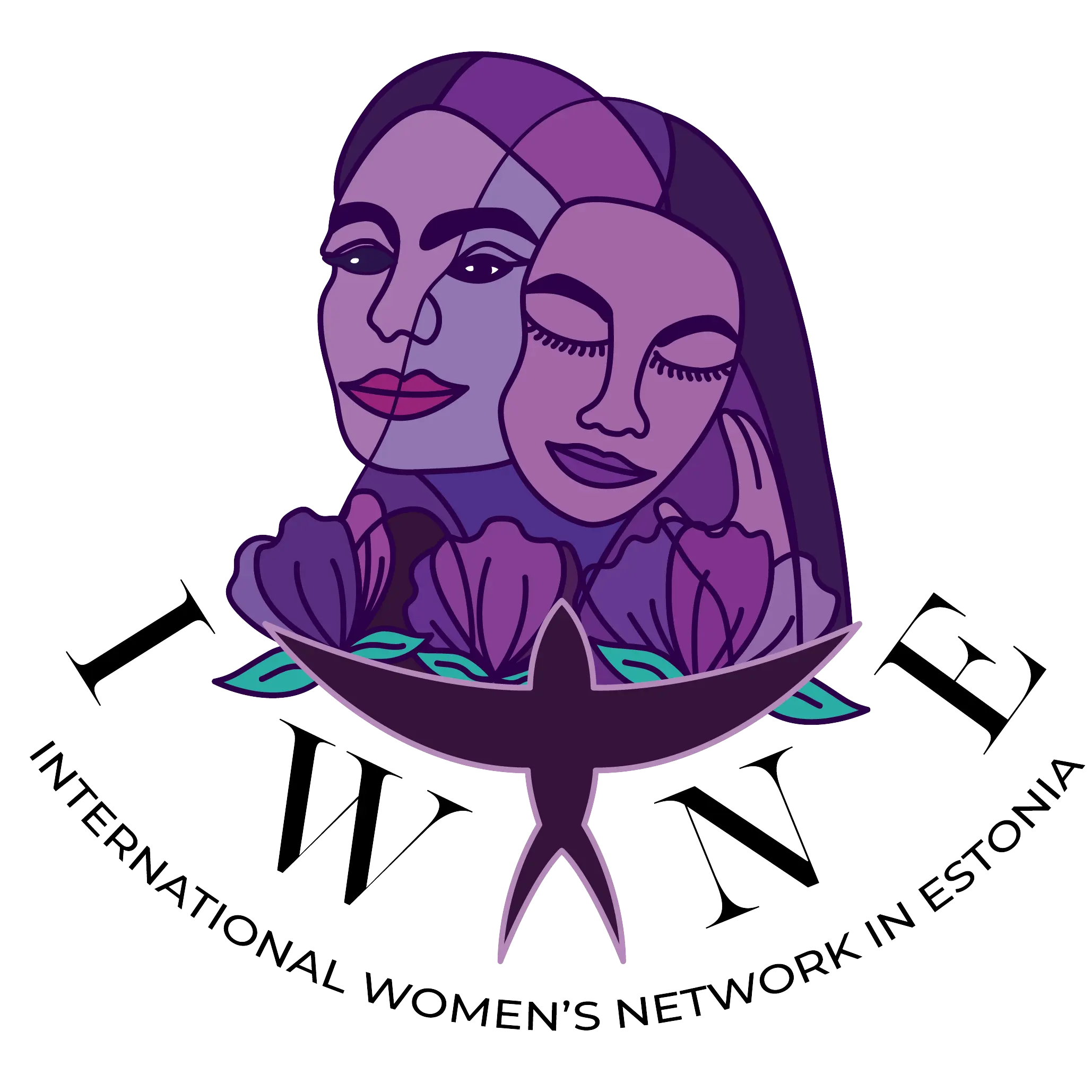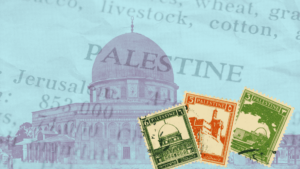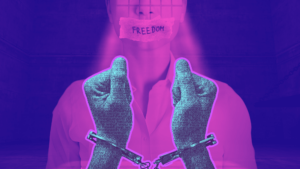Mohammad Reza Shah ruled Iran prior to 1979. His main goal was good relations with the United States and westernisation of Iranian society (Iranian Revolution of 1979, 1994). He created opportunities for women to advance in the administration and be involved in decision-making processes. Women could dress as they wished and follow the fashions of the time. The Shah focused on improving levels of higher education and allowed people to behave in a more secular manner. His focus on westernisation sparked opposition and he ignored poorer regions. Anti-western Islamist movements led the revolution in 1979, the establishment of the Islamic Republic, and an ultra-conservative religious regime. One of the earliest acts was that women gradually lost their basic rights, with the requirement to be veiled being an early and especially symbolic effect, and that freedom for young people of both sexes to meet became strictly limited, a trend that has continued until now when women are demonstrating for their freedom (Kazmir, 2019).
From Memories and Experiences to Regenerative Landscapes
In the discussion of spatial (in)justice, issues such as urban justice, environment, inequality, etc. are considered, related to the search for justice and democracy. Awareness of space and influencing factors may help in examining how gender socialisation is the result of spatial correspondence and how biological concerns about gender are catalysts (Butt, A. I., Khan, K. U., & Parvez, N., 2020). The key aspect is how space and place contribute to political, social, and cultural consciousness while allowing the individual to move in society according to social norms and public spaces. By focusing on and understanding the issue of spatial injustice in the context of the policies of the Iranian government, we can see how the Iranian people felt this gender injustice strongly after the Islamic Revolution.
Younger Iranian women see themselves as agents of social change, standing at the forefront of breaking down social boundaries (Salehi et al., 2020). The majority of interviewees from the 20-30 age group expressed concerns about this situation, emphasising the direction in which their generation is moving. Most of these participants don’t think about life before the 1979 revolution as they did not experience it. This generation has grown up in the age of social media and has access to the internet for information, they can see the basic spatial rights enjoyed by others and they aspire to have a similar degree of equality in their society. The beliefs of this generation emerged equally among male and female interviewees, which marks a contrast between generations where men historically tended to demand control over and obedience from women. Both young women and men wish to assert their spatial rights and aim to break down the barriers through their protests. This is significant because 60 percent of the Iranian population is aged below 30, and this young population has grown up under conditions where economic and political factors are significantly impacting them and driving the public protest movement (Duke Today, 2022)
In Iran, this young generation is facing a “crisis in the city” where economic factors limit their freedom and force them to spend more time “being in public” – using local public spaces for a range of social and other activities. Thus, they face the consequences of urban mismanagement, as well as the presence of the morality police who enforce – or try to enforce – the dress code for women and to disperse boys and girls who are together, whether in groups or as couples. This results in a further decrease in basic human rights and marginalizes women as full citizens (Hakiminejad, 2022). According to (Mokhles and Sunikka-Blank, 2022) it is important for women to understand the role of public space in their neighbourhoods because, as long as they live in societies where religion is the force, they have to follow cultural norms and practices. This makes access to public spaces difficult or limiting. It often coincides, too, with poor-quality housing, poor-quality urban landscapes, and deteriorating or unsafe public spaces.
Interviewees in their 40s and 50s identified Tehran as a gender-segregated city. While the city was gradually regenerated after the revolution, this was partly to ensure more separation between men and women in society and space. These women explained how everywhere – from public transport to public parks – they are spatially separated from men. The concept of the gender-segregated city design included plans to build around 200 parks with specific designs to ensure gender segregation, for example, some only for women and some with women-only areas, and the rest for everyone (MEE correspondent, 2022). The middle-aged interviewees mentioned that they observe this segregation, without agreeing with it, while the younger women of the so-called “new generation” explained that they always turn restrictions into opportunities by, for example, running away from the morality police to find hidden places in parks where they can unveil and mix with boys and so assert their rights.
Society is clearly impacted by these changes, and several generations are affected. (Pellow, 2019) claims that political forces are crucial to the success of regenerative development, and addressing power imbalance and social inequality. Incorporating society into decision-making while paying closer attention to the problems faced by particular groups—in this case, Iranian women are needed but not currently possible. However, as reported by some interviewees, the recent freedom movement was about segregation regulations where in universities students decided to disobey the rules and to sit and eat together (Shahrokni, 2022).
By focusing on experiences, memories, strategies, and tactics employed by women in public spaces, the concept of regenerative public spaces can be applied to create more sustainable and equitable landscapes.
Economic
Many of the older respondents had witnessed the economic mismanagement of the Islamic regime and how the economy shrank over the 45 years since the revolution. They observed that the gap between social classes, already wide at the time of the monarchy, actually widened further. Several interviewees noted a change in the nature of activities from “freedom of being in public” to “forced to use certain spaces to feel engaged.” Working-class families initially responded to the government’s move away from neighbourhood parks by visiting the bigger ones in the central and northern areas of the city where they could enjoy being “first-class citizens.” As a result, poor management led to neighbourhood parks being considered unsafe by women. According to (Ghasemi, Behzadfar and Borhani, 2023) the rapid population growth in Tehran has led to increased spatial inequality and more limited access to public facilities, including leisure spaces. This poses significant problems as many people even with an average income cannot afford to use facilities which charge an entry fee or equipment hire.
Socio-Political
Oppression and discrimination against different social groups are hallmarks of Tehran, as stated by most interviewees. In public areas designated for women, they felt themselves to be subject to structural oppression. They explained that in “ladies’ parks” they are not allowed to enjoy the benefits of urban life completely, as there are still rules and restrictions – for instance, they cannot use their phones – although there are more restrictions in so-called “mixed parks”. Women-only parks are increasing in Tehran, a trend which is changing the city’s planning and design approach and polices. Tehran municipality claims that ladies’ parks create a safer place for women, all the while building those parks with high concrete walls to screen them from the male gaze (Sinaiee, 2022).
Safety
A recurring theme in the interviews was the safety of public spaces. Participants reported experiencing many issues, from poor lighting meaning they couldn’t use public spaces in the evenings, to the economy limiting their activities. Most participants highlighted how safety became a priority over time and restricted their use of the outdoors. For instance, people from poorer parts of the city travel to use parks in wealthier districts and the behaviour of some of these people make local residents uncomfortable. Women also have to be aware of the morality police judging how they are dressed when out in public. This of course is one of the main symbols of the recent demonstrations and some of the younger interviewees explained that they have stopped caring and will go out without a hijab in defiance of the morality police. Interviewees reported that they are constantly at risk of being harassed when what they need is greater protection and recognition.
(Sheehan, 2019) suggests that applying the concept of regenerative social cultural capital could have a positive impact on the life of women. Research by (Hamedanian and Ghadermazi, 2022) and also mentioned by interviewees, shows that women face the same impacts regardless of age or socio-economic class which, however, depend on different factors, whether socio-economic challenges, dysfunctional socialization or crowding in public places. Their study also showed that feeling unsafe emerges from a variety of reasons ranging from relatively small offences, such as being stared at by a man, to more major impacts, such as being stopped by the morality police.
Use of Public Space
Memories of the older interviewees demonstrate how the design of public spaces, ranging from streets to parks, once helped people fulfil their daily routines. According to the senior participants, in pre-revolution Tehran, people came together for a larger variety of activities, using public spaces to bring people together. However, in post- revolution Tehran, they faced a change where many parks were redesigned to comply with the new regulations. The “demonstrative generation”, the 20-30 age group, mentioned how they bring new lifestyles to their city, where they can assert what they consider to be their basic rights in public spaces, despite the efforts of the authorities. As David Harvey invited to visit Iran in 2014 said ‘’Stand by the Oppressed and Say ‘’NO’’ to the Oppressors’’ (he was subsequently banned from visiting) (Hakiminejad, 2022).
(Jalili, 2016) has shown that Iranian women still selectively use public spaces and adapt how they use them according to both their needs and their willingness to ignore the regulations. She refers to ‘’negotiating gender and class” in public spaces and points out women have gradually learned how to avoid barriers. Depending on the situation they face, ranging from where they live to places they visit, leading them to use different tactics to maintain their presence in public spaces in such a way that they feel they are reclaiming them.
Where do concepts and practices of regenerative landscapes for justice feature in this situation?
Women yearn for public spaces that can reflect their needs and aspirations. If the regime changes or responds finally to what the people want. Such spaces can be regenerated and redefined as inclusive and restorative, equitable and just towards women. In the Iranian situation, it is not easy to define a regenerative landscape – these do not exist in the context of female experience. For regenerative public spaces to work, there needs to be a deeper understanding of the specifics of a given situation; in the case of Iran, this depends on changes to the political system. Given the importance of memories and past experiences, reconstruction of past conditions can indicate models for recreating socially regenerative landscapes while also adapting to the needs of present and future generations.
Bibliography
Butt, A. I., Khan, K. U., & Parvez, N. (2020) (PDF) Spatial Justice and Gender Socialization in Jamil Ahmad’s The Wandering Falcon. Available at: https://www.researchgate.net/publication/349958465_Spatial_Justice_and_Gender_ Socialization_in_Jamil_Ahmad’s_The_Wandering_Falcon (Accessed: 24 June 2024).
Duke Today (2022) Protests Grow More Frequent As Young Iranians Demand More Freedoms, Experts Say | Duke Today. Available at: https://today.duke.edu/2022/09/protests-grow-more-frequent-young-iranians- demand-more-freedoms-experts-say (Accessed: 24 June 2024).
Ghasemi, K., Behzadfar, M. and Borhani, K. (2023) ‘Spatial analysis of leisure land uses in Tehran: Assessing inequity using the MARCOS method within a GIS framework’, Heliyon, 9(9), p. e19691. Available at: https://doi.org/10.1016/j.heliyon.2023.e19691 .
Hakiminejad, A. (2022) ‘“The Right to the City” and the Problem of Tehran’, in.
Hamedanian, F. and Ghadermazi, S. (2022) ‘Challenges for Iranian Women in Daily Urban Safety’, Frontiers in Sociology, 7, p. 790905. Available at: https://doi.org/10.3389/fsoc.2022.790905 .
Iranian Revolution of 1979 (no date). Available at: https://web.stanford.edu/class/e297c/war_peace/middleeast/hiranianrev.html (Accessed: 16 June 2024).
Jalili, jaleh (2016) ‘Urban Experience in Tehran – FRONTIERS’. Available at: https://frontiers.utah.edu/urban-experience-in-tehran/ (Accessed: 16 June 2024).
Kazmir, M. (2019) Before and After: Iran 1979, International Policy Digest. Available at: https://intpolicydigest.org/before-and-after-iran-1979/ (Accessed: 30 April 2024).
MEE correspondent (2022) Iranians in Tehran fear mayor’s gender-segregated parks the start of harsh restrictions, Middle East Eye. Available at: https://www.middleeasteye.net/news/iran-tehran-rail-hardline-mayor-gender- segregated-parks (Accessed: 16 June 2024).
Mokhles, S. and Sunikka-Blank, M. (2022) ‘“I’m always home”: social infrastructure and women’s personal mobility patterns in informal settlements in Iran’, Gender, Place & Culture, 29(4), pp. 455–481. Available at: https://doi.org/10.1080/0966369X.2021.1873743 .
Salehi, A. et al. (2020) ‘Young Iranian women as agents of social change: A qualitative study’, Women’s Studies International Forum, 79, p. 102341. Available at: https://doi.org/10.1016/j.wsif.2020.102341 .
Shahrokni, N. (2022) Students in Tehran Protest Gender Segregation in University Dining Hall, Truthout. Available at: https://truthout.org/articles/students-in-tehran- protest-gender-segregation-in-university-dining-hall/ (Accessed: 16 June 2024).
Sheehan, R. (ed.) (2019) ‘Rethinking memorial public spaces as regenerative through a dynamic landscape assessment plan approach’, in Regenerative Urban Development, Climate Change and the Common Good. Routledge.
Sinaiee, M. (2022) Parks In Tehran Will Be Partially Segregated For Men, Women, Iran International. Available at: https://www.iranintl.com/en/202204117301 (Accessed: 24 June 2024).











